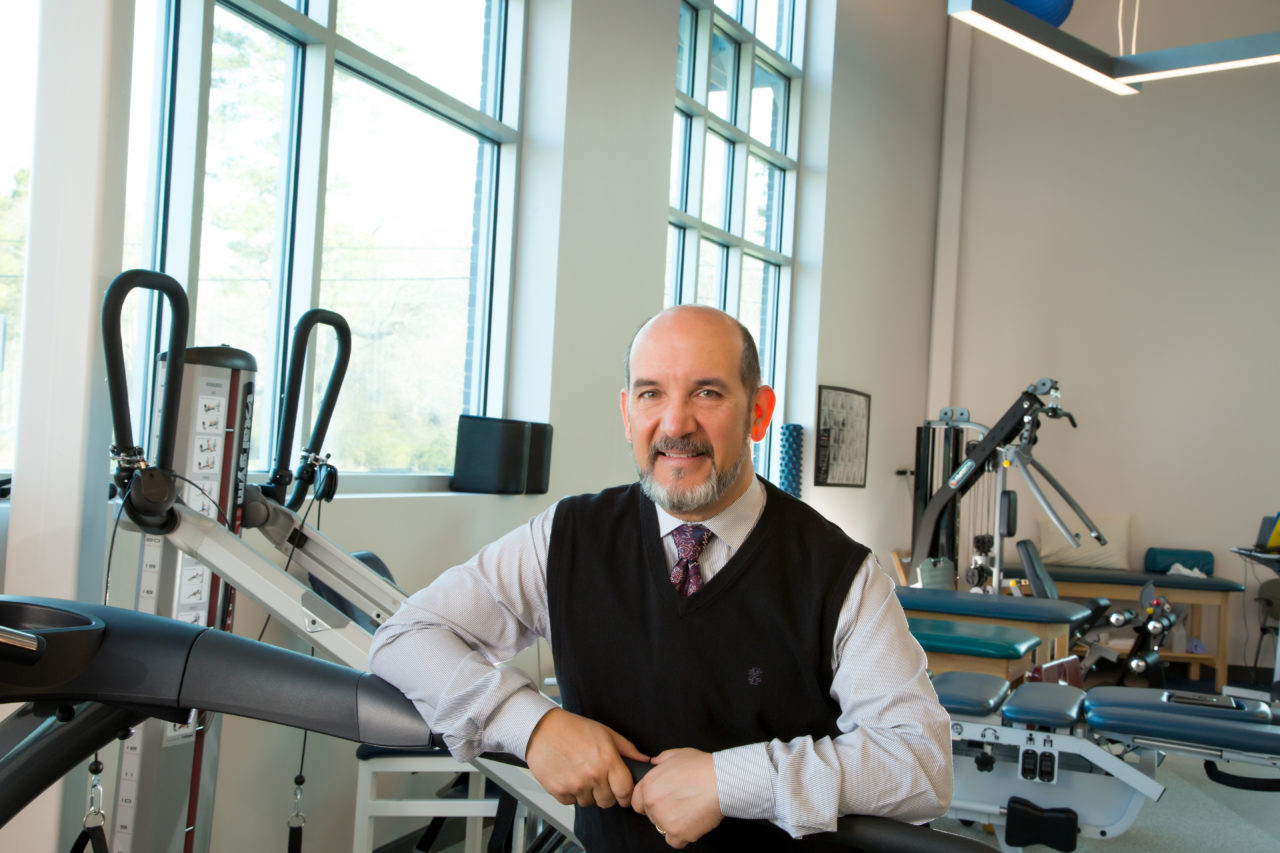Unique Physical Therapy Treatments Give Patients More Choices

Unique Physical Therapy Treatments Give Patients More Choices
As seen the Hampton Roads Physician Magazine Winter 2019 issue.
The right therapist and treatment plan can make all the difference to your patients. A great plan leads to a great recovery—or even the possibility to avoid surgery altogether.
At Sports Medicine & Orthopaedic Center (SMOC) in Chesapeake and Suffolk, highly trained physical and occupational therapists provide comprehensive care, including access to unique and uncommon treatments. Thanks to their decades of experience and wide-ranging knowledge, they can offer your patients more treatment options than ever, including:
Instrument-Assisted Soft Tissue Mobilization (IASTM)
Instrument-assisted soft tissue mobilization (sometimes called the Graston® technique) can help with a variety of soft tissue problems, from scar tissue to inflammation. Using specially designed stainless steel tools, physical therapists can break up scar tissue.
IASTM tools allow physical therapists to apply the right amount of pressure to damaged tissues. The pressure causes microtrauma that promotes healing and reabsorption of scar tissue or adhesions.
“The tools really break up scar tissue and promote healing,” says George Houle, PT, MPT, CCI. “They are uniquely shaped to help you accomplish more with less discomfort in the physical therapist’s hands. We can break up internal scar tissue and promote smooth gliding that should occur in muscles and joints.”
Houle says the tools can be used on almost any area of the body from the neck down. He and his team often use the tools after total knee replacements, shoulder surgeries or ACL repairs.
The team at SMOC also offer courses in using the tools at their facilities, helping physical therapists across the region improve their skills and expand their knowledge.
McKenzie Method

SMOC is also home to two certified McKenzie Method® therapists who have completed years of rigorous training to offer this advanced physical therapy tool.
The McKenzie Method starts with a thorough assessment of a patient’s musculoskeletal problems. Patients perform repetitive movements so the physical therapists can see how the patient’s joints and muscles function. The patient’s problem is then classified according to McKenzie Method standards.
This classification helps the physical therapist offer a customized treatment plan centered around patient involvement. The patient may have to avoid certain postures, perform certain stretches or exercises throughout the day or receive manual therapy.
“We can have someone walk in with significant pain and leave with a 1 or 2 on the pain scale without needles or scalpels or opioids,” says Houle. “The physical therapist’s hands can greatly reduce the person’s pain and increase their ability to do what they want to do.”
Houle says they often use the McKenzie Method to care for neck and back problems, including bulging disks.
“If the disk material is protruding straight back, by extending a patient’s back, we can help to create a vacuum and pull that material back into the disk,” says Houle. “We try to use this method to decrease pain and improve functional mobility.”
Since the exercises can be repeated five or six times a day, recovery and pain relief can be quicker than other forms of therapy.Hand Therapy
Though our therapists at SMOC provide total body care, they can also offer highly specialized care. Certified hand therapists at SMOC have completed years of training and passed a licensing exam to earn their title. The two certified hand therapists on staff at SMOC provide highly specialized care that helps patients regain independence.
“Our hand therapists focus on all areas of the upper limb from fine motor skills like feeding yourself, to writing your name, or gripping and lifting something,” says Houle. “We can help decrease pain and increase function of the hands and upper extremity.”
SMOC’s working relationship with the Arthritis Foundation helps dozens of people each year maintain function in their hands, wrists and fingers. They treat both rheumatoid and osteoarthritis with splints, manual therapy, and exercises.
Advanced training and experience make all the difference for patients at SMOC, whether they are experiencing pain in their hands, back or knees.
“Our experience sets us apart,” says Houle. “We have a wide knowledge in a variety of practice areas so patients can always find the help they need.”











